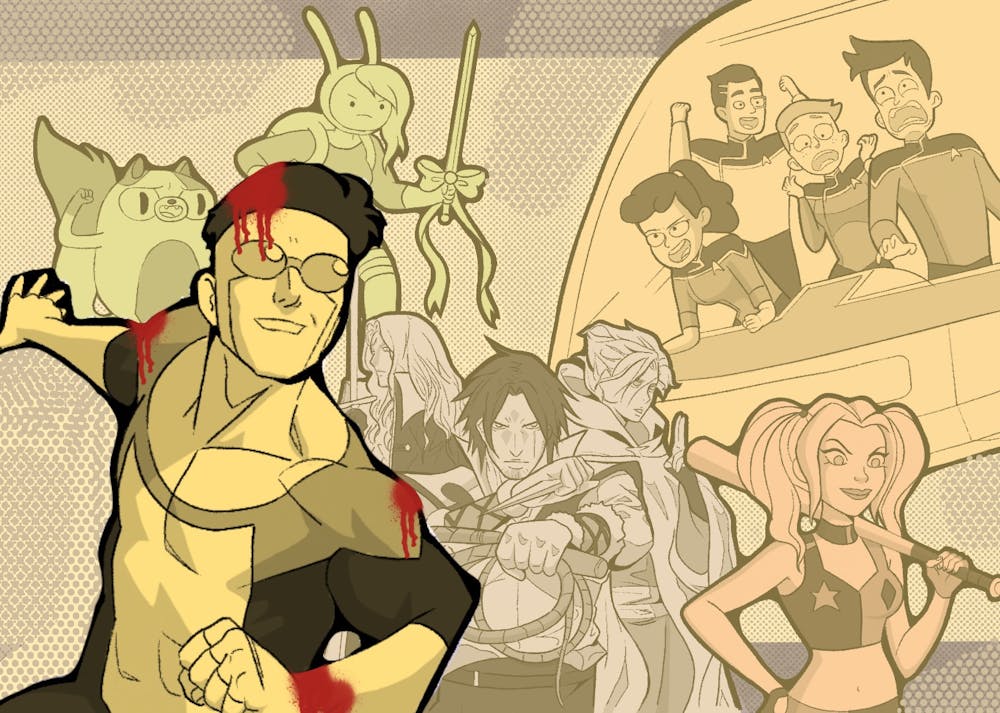Despite the modern widespread appeal of digital sources such as movies and television, one type of print media is still in style for students: comic books.
On Tuesdays at 4:30, The Comic Book Club at ASU Poly meets to discuss comic books and the wider universes they inhabit. Topics range from the analysis of character relationships within certain texts to discussing the relative appeals of various storyline adaptations.
The club was started this semester by junior Kevin Cruz, who is studying human systems engineering, and junior Jaden Boughton, who is studying software engineering.
"For me personally, comics have always been kind of an escape," Boughton said. "I just wanted to see people have fun, make friends, to kind of take a break from school because sometimes things can get very demanding."
Other members even divulge in other forms of art-based literature such as manga, which are comic books and graphic novels produced and published in Japan. Like how comic books are adapted into film versions, manga is often adapted into anime.
Na'eem McKay, a club member and freshman studying human resources, said he reads more manga than comic books and enjoys comparing the two genres in terms of the characters' morals.
Beyond the diversion and connection felt by the club members, there is also an appreciation for the planning and craftsmanship put into each comic strip.
"I feel like I'm contributing to someone's artwork, to someone's livelihood," Cruz said. "That's what makes it special."
The club can be seen as a reflection of how both the industry and audience has changed as a result of new digital products, such as films based on comic books. A pillar topic of the club's discussions is the comparisons between various adaptations and strains of the original comics, whether that be through new comic series, television shows, or movie versions.
Cruz made an analogy between film adaptations and writing a class paper. When creating an adaptation of a comic book, the producers must "cite their sources" and represent the intentions and ideas of the book accurately.
"When these are such iconic characters that people have made connections with for so many years when you go and adapt them to the live action or do it for (animation), there's a little bit of responsibility that comes with it," Cruz said.
In addition to the enjoyment of discussing similarities and differences between the various adaptations, the evolution of digital visual media has led to the evolution of writing styles within comic books.
According to Boughton, the books used to be written in dialogue-heavy, campy styles whereas currently, books tend to be illustrated with more headshots and story-driving images to mimic frames often seen on television shows.
"The way that comics are written now is different than the way they used to be written," Boughton said. "They used to be more compressed and now more people appreciate cinematic touches to (the books)."
To compete with the new digital media formats, the comic book industry is innovating through its storylines and storytelling to draw interest to their books.
"They're trying a lot of new things," Cruz said. "It's like a company trying new products, just seeing what sticks, trying a bunch of different ideas and seeing what people gravitate toward."
However, the popularity of other forms of storytelling has not diminished the impact of reading comic books. McKay said he prefers the books over the new digital media formats.
"The comic book has more emotion in it," Mckay said. "The adaptation is kind of pulling more things from the comic book while making (it) their own."
Edited by Senna James, Abigail Beck and Natalia Jarrett.
Reach the reporter at kagore1@asu.edu and follow @kategore_17 on X.
Like The State Press on Facebook and follow @statepress on X.
Kate is a freshman studying journalism and mass communication. This is her second semester with The State Press.




